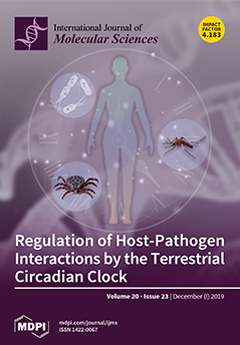Wheat yield is greatly reduced because of the occurrence of leaf spot diseases.
Bipolaris sorokiniana is the main pathogenic fungus in leaf spot disease. In this study,
B. sorokiniana from wheat leaf (W-
B. sorokiniana) showed much stronger pathogenicity toward wheat than
[...] Read more.
Wheat yield is greatly reduced because of the occurrence of leaf spot diseases.
Bipolaris sorokiniana is the main pathogenic fungus in leaf spot disease. In this study,
B. sorokiniana from wheat leaf (W-
B. sorokiniana) showed much stronger pathogenicity toward wheat than endophytic
B. sorokiniana from
Pogostemon cablin (P-
B. sorokiniana). The transcriptomes and metabolomics of the two
B. sorokiniana strains and transcriptomes of
B. sorokiniana-infected wheat leaves were comparatively analyzed. In addition, the expression levels of unigenes related to pathogenicity, toxicity, and cell wall degradation were predicted and validated by quantitative reverse transcription polymerase chain reaction (qRT-PCR) analysis. Results indicated that pathogenicity-related genes, especially the gene encoding loss-of-pathogenicity B (LopB) protein, cell wall-degrading enzymes (particularly glycosyl hydrolase-related genes), and killer and Ptr necrosis toxin-producing related unigenes in the W-
B. sorokiniana played important roles in the pathogenicity of W-
B. sorokiniana toward wheat. The down-regulation of cell wall protein, photosystem peptide, and rubisco protein suggested impairment of the phytosynthetic system and cell wall of
B. sorokiniana-infected wheat. The up-regulation of hydrolase inhibitor, NAC (including NAM, ATAF1 and CUC2) transcriptional factor, and peroxidase in infected wheat tissues suggests their important roles in the defensive response of wheat to W-
B. sorokiniana. This is the first report providing a comparison of the transcriptome and metabolome between the pathogenic and endophytic
B. sorokiniana strains, thus providing a molecular clue for the pathogenic mechanism of W-
B. sorokiniana toward wheat and wheat’s defensive response mechanism to W-
B. sorokiniana. Our study could offer molecular clues for controlling the hazard of leaf spot and root rot diseases in wheat, thus improving wheat yield in the future.
Full article






